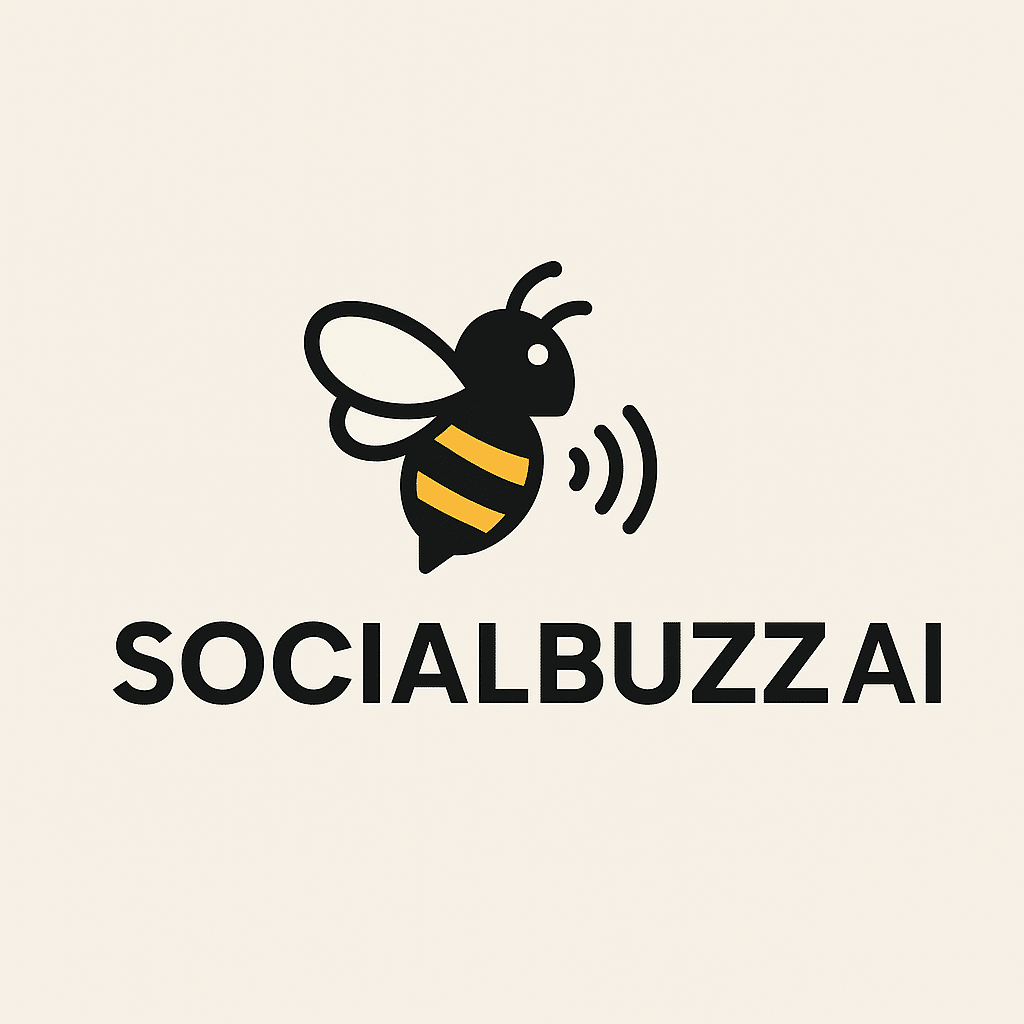Top Tips for Generating Quality Social Media Posts with SocialBuzzAI
Key Takeaways:
SocialBuzzAI simplifies content creation using AI without coding.
No-code platforms like Make.com streamline complex integrations.
Clear, flexible initial goals allow projects to evolve naturally


From Idea to MVP: The Birth of SocialBuzzAI
SocialBuzzAI started as a solution to a simple but repetitive task. Realising the potential to automate content creation, I envisioned a straightforward tool to make content generation effortless.
Identifying a Real-World Problem = My initial concept emerged while working at BioWire, transferring blog posts into LinkedIn and Instagram content. The repetitive, time-consuming nature of this task sparked the idea for automation, prompting me to explore AI-powered solutions.
Building a Simplified First Version = Initially, my goal was to create a basic tool where you input blog posts to receive LinkedIn-ready content. Recognising the importance of starting simple, the MVP became a straightforward text-in, text-out interface, laying a solid foundation for future improvements.
Expanding the Tool’s Scope = As the project progressed, I realised SocialBuzzAI’s potential reached far beyond just blog-to-social posts. The versatility of the tool became evident, and I began expanding its capabilities to accommodate diverse content creation scenarios, enhancing its usability for marketers and content creators alike.
No-Code Tech Stack: Elementor, WordPress and Make.com
Choosing the right technologies was crucial to quickly building and launching SocialBuzzAI. Leveraging no-code platforms streamlined the process significantly.
Choosing WordPress and Elementor = WordPress, combined with Elementor, provided a user-friendly and efficient framework for rapidly developing the frontend. Elementor’s intuitive drag-and-drop builder allowed me to design the website and user interface quickly without extensive coding.
Integrating with Make.com = Make.com played a pivotal role in bridging frontend actions with backend AI processes. Setting up custom webhooks and scenarios on Make.com enabled seamless data flow between the frontend input and OpenAI’s ChatGPT responses, creating a smooth, responsive user experience.
Mastering Webhooks and API Automation = Learning about webhooks was essential for SocialBuzzAI’s backend functionality. By using JSON payloads and POST requests, I connected the frontend input directly to Make.com and, subsequently, ChatGPT, enhancing real-time interaction and responsiveness.


Brand Development and User Experience Design
A strong brand identity and intuitive user experience were central to SocialBuzzAI’s appeal, enhancing usability and market positioning.
Developing the Brand Identity = Choosing the right name was crucial. Initially exploring “ContentBuzz,” I eventually settled on “SocialBuzzAI” for its sociable, vibrant feel. The name also opened branding opportunities, utilising the bee motif, playful colours, and engaging visuals, making the tool memorable and distinctive.
Crafting the User Experience = I carefully designed the frontend to ensure it was user-friendly and intuitive. From the simple “Transform” button to the “Copy” feature leveraging the browser’s clipboard API, every interaction was optimised for ease of use, ensuring a frictionless user experience.
Iterative Improvement = Continuous refinement was key. I regularly updated the prompt structure to improve ChatGPT’s outputs, optimised the frontend for better responsiveness, and tested various UX elements to enhance user satisfaction and tool effectiveness.
Why did you choose a no-code approach to build SocialBuzzAI?
I opted for a no-code approach because it drastically reduces development time, lowers barriers to experimentation, and allows rapid prototyping and deployment. Platforms like WordPress, Elementor, and Make.com made the process efficient and flexible, allowing quick iterations and improvements without extensive technical resources.
How does SocialBuzzAI convert text into social media posts?
SocialBuzzAI captures user input via a simple HTML interface, sends it through a webhook to Make.com, which then processes it through OpenAI’s GPT model. The AI-generated content is returned instantly via webhook responses, allowing seamless frontend integration. This streamlined process makes creating social content quick and effortless.
What was the biggest challenge in building SocialBuzzAI?
The main challenge was mastering webhook integrations and optimising the AI prompts. Ensuring a smooth real-time interaction between the frontend, Make.com, and ChatGPT required careful configuration and extensive testing. Perfecting the prompt structure to consistently generate high-quality outputs also took significant refinement.
Why did you decide on the name SocialBuzzAI?
SocialBuzzAI was chosen for its engaging and memorable quality. I considered several options, including ContentBuzz, but SocialBuzzAI resonated better due to its social and dynamic connotations. It also allowed playful branding around bees and buzzing, creating an attractive visual identity that enhanced market appeal.
Is SocialBuzzAI suitable for users with no technical background?
Absolutely! SocialBuzzAI is intentionally designed for ease of use by anyone, regardless of technical skill level. The no-code, intuitive frontend ensures users can effortlessly transform text into engaging social media content without needing any coding knowledge or extensive technical training.
What future enhancements are planned for SocialBuzzAI?
Future plans include expanding SocialBuzzAI’s integration capabilities, supporting more detailed analytics, and enabling direct posting to various social platforms. Additionally, refining AI prompts and exploring new AI models to enhance content quality and versatility is a significant ongoing priority.

